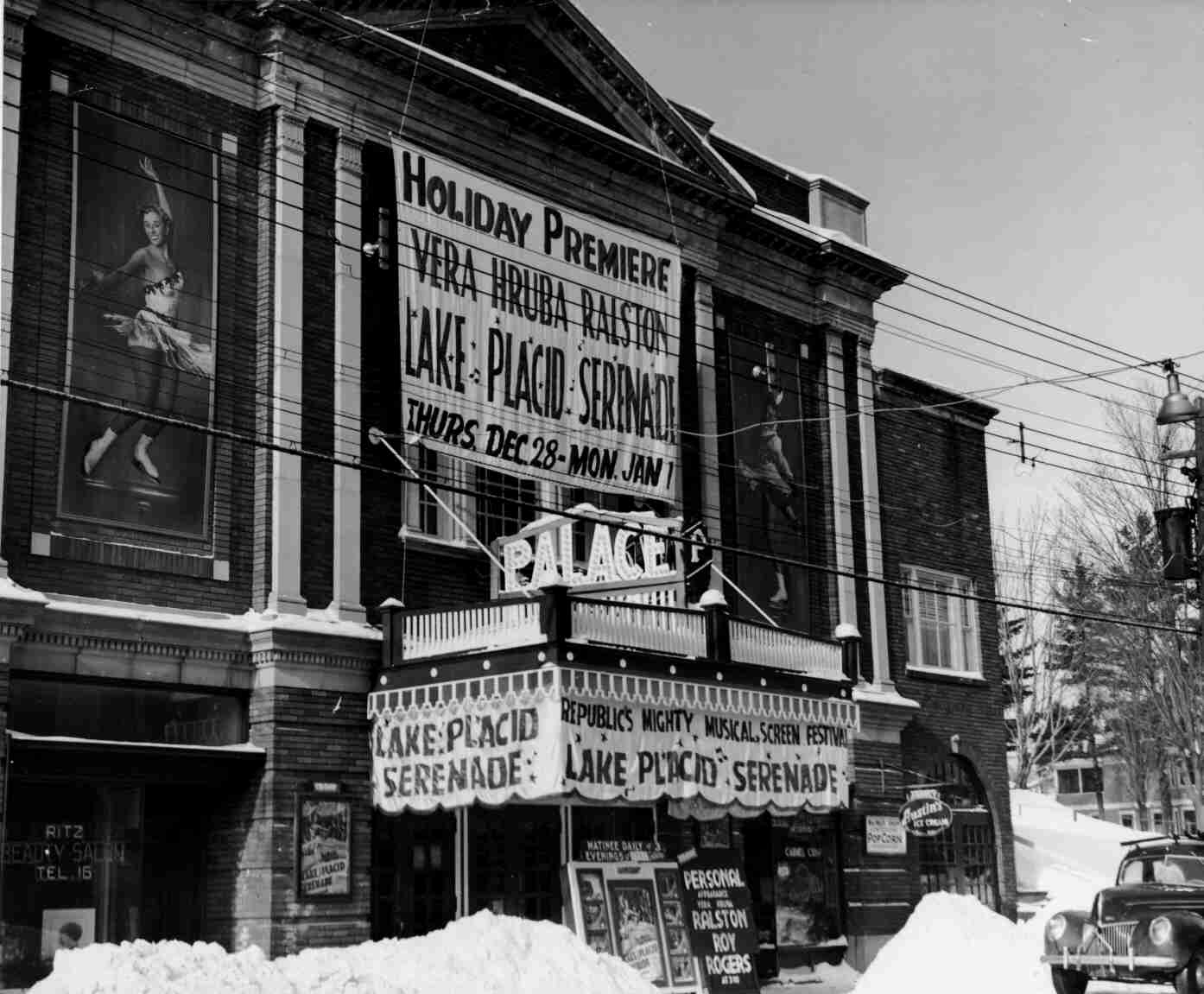Installed in 1926 with the theatre, the organ was originally designed to have two manuals, but was expanded to three sometime before installation. Built on 15 inches of wind, the organ boasted seven ranks, unified from 16 feet all the way to one and three-fifths. In the original stop list a toy counter, comprised of many of the usual effects was planned, but was never added. Reasons for this are not known. Anyway, the model 23-N was chosen for final installation. Despite the absence of the toy counter, the wiring junction from the relay still has contacts labeled with all of the prepared toys.
From the time that the instrument was installed in 1926, it served it purpose
graciously, lending to the wonderful sounds that  only
a theatre organ can produce. Then, the talkies came, as if like an
army, its only intent to destroy its enemy, the theatre organ. And
that is what happed to the Palace Theatre Morton. The theatre, just
barely new itself, was wiring the auditorium for sound. Throughout
the frenzy of the theatre to get the sound system, the organ was all but
forgotten about. It was used less and less, until it was finally
used no more.
only
a theatre organ can produce. Then, the talkies came, as if like an
army, its only intent to destroy its enemy, the theatre organ. And
that is what happed to the Palace Theatre Morton. The theatre, just
barely new itself, was wiring the auditorium for sound. Throughout
the frenzy of the theatre to get the sound system, the organ was all but
forgotten about. It was used less and less, until it was finally
used no more.
The theatre traded hands several times, and during one of the ownerships, the organ was used for the overture before shows. The people loved it, but its fate had already been set. The theatre was sold yet again, and the owner did nothing with the organ. The console sat untouched in the pit, and hardly even seen behind the velvet curtain that hung from the railing. Later, the owner, looking to do some stage shows, expanded the stage, over the pit, and right over the console!
Then, the fateful day came for the organ. Previously, the movie screen had been on a batten, and could be raised for stage shows. But stage shows had now moved to other places in Lake Placid, and The Palace wasn't even considered as anything but a movie theatre anymore. So, the idea was hatched to put in a permanent screen, and a bigger one. That would mean that the proscenium arch that towered over the stage would have to be enlarged as well, to make more room for the screen. It just so happened that the cables that connected the console to the relay ran through the arch. That fateful day, when the arch was being cut out, a worker stumbled upon two cables, seeming to run through the arch to the ceiling. When he asked the owner what to do with them, the reply was, "Cut 'em.:" Thus ended the organ for good. It would have taken at most, thirty minutes to move the cables carefully to one side, and then reposition them later. But the owner obviously didn't care. Whether he knew or not what they connected is not known.
After Reg Clark, the present owner, bought the theatre in 1963, the cable was discovered. Chris Brescia, the engineer at WNBZ, a radio station in Saranac Lake, and Ray Durkee, the music teacher at Lake Placid High School, worked on getting the cable back together, and the organ working. After many hours after work for weeks, the organ was finally playing. However, it still was not fully operational. Water damage from the leaking roof had gotten into the leather, and many of the ranks were not fully playable. Scores of ciphers sounded as soon as enough air was coming out of the blowers. Some were fixed, but still, many remained.
As deja vu from many years ago, the organ wasn't played anymore, as there wasn't much interest, and another major storm brought water cascading into the chambers. Finally, Reg put his foot down and said that the organ was going to be fully restored, so that it was all working. In September of 1998, Mel Robinson and Jeffrey Barker came for three weeks, and worked non-stop to get the organ speaking. The long awaited full rebirth of the organ was planned for a silent film festival, comprising of four shows, every Thursday, starting on October 8, 1998. Jeffery Barker provided the entertainment, and the organ that had been silent for so many years was once again accompanying silent films.
In mid-April to early May of 1999, Melvin Robinson was once again the in chambers at the Palace to finish the restoration. This included working on the wiring, finishing several ranks, and getting the toy counter operational. (Up until this point, only the tambourine, castanets, and crash cymbal played.) This included getting a custom made head for the 13" snare drum, as no drum company makes these standard anymore. Time ran out, though, and he was forced to return to New Jersey. But, in the summer of '99 he was up once again, and this time, took the toy counter back home with him, to work on it, and plans to return sometime in late August or early September.
